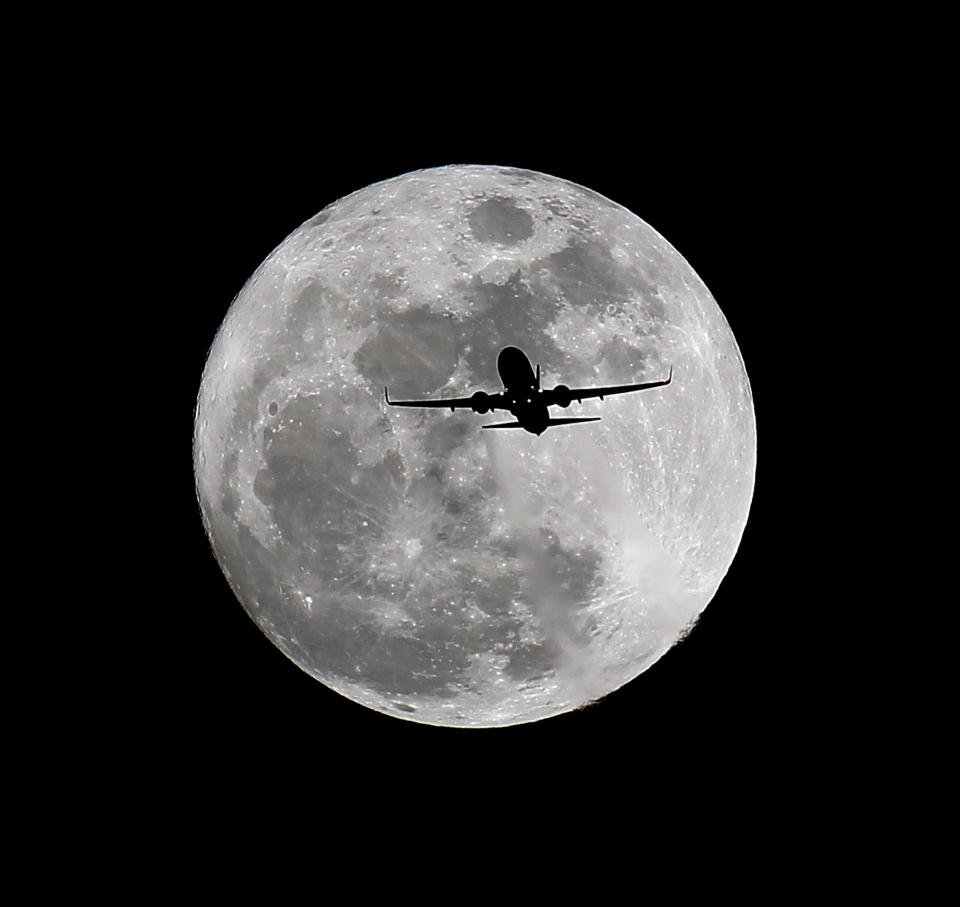Full moon rising: The first lunar spectacle of 2023 is this weekend's wolf moon
- Oops!Something went wrong.Please try again later.
If you lift your eyes to the sky Friday night, you can catch the first full moon of 2023 – the wolf moon.
The full moon can best be seen at 6:08 p.m. EST on Friday and will appear full through Sunday morning, according to NASA.
"Look for the moon to rise from the northeastern horizon around sunset that evening," according to the Old Farmer's Almanac.
This is the first of 13 full moons in 2023, the Old Farmer's Almanac said.
The moon is also known as a micromoon, because the moon, which circles the Earth in an elliptical orbit, is farther from the Earth, said Space.com.
2023 FULL MOONS: What are the full moon dates for 2023?
Meteor showers of 2023: A visual guide on where and when to view the year's 11 sky shows
Why is it called the wolf moon?
The first full moon of the year is known as the wolf moon because historically it was believed during the winter wolves howled more at night because they were hungry, the Old Farmer's Almanac said.
The name has stuck even though there are doubts about the accuracy of the wolf moon moniker.

Why is it also called a micromoon?
For this full moon, the moon will be about 250,000 miles from Earth. That's close to the farthest point in its orbit, which is 252,088 miles away, according to NASA.
When the moon is at its closest – 225,623 miles away – or at perigee, that is considered a supermoon.
Will this full moon look the same as others?
Even though this full moon is smaller and not as bright, most viewers cannot tell the difference, writes science journalist Robert Lea on Space.com.
In comparison, supermoons are only about 14% larger than other full moons, he said.
However, a "moon illusion" could make a supermoon on the horizon appear much brighter than normal, writes Elizabeth Howell on Space.com. "Scientists suggest that perhaps the brain is comparing the moon to nearby buildings or objects," she writes, "or perhaps our brain is just wired to process things on the horizon as bigger than things in the sky."
Mark your calendar: there are four full supermoons in 2023, according to EarthSky.org – the first on July 3.
What's everyone talking about?: Sign up for our trending newsletter to get the latest news of the day
Follow Mike Snider on Twitter: @mikesnider.
This article originally appeared on USA TODAY: Full moon 2023: First of the year arrives this weekend, the wolf moon

